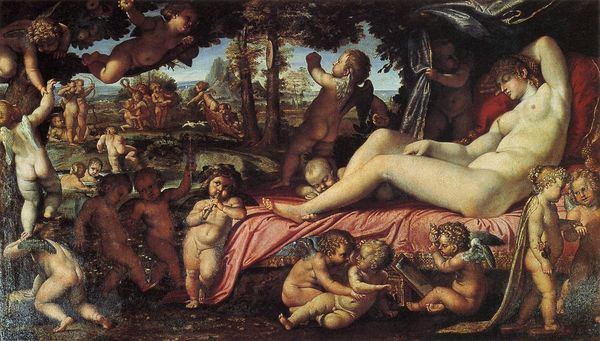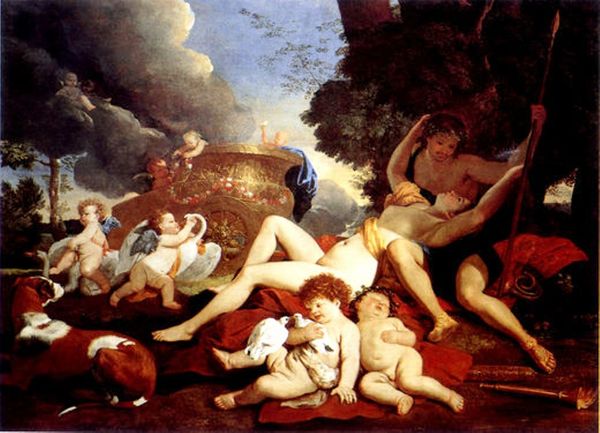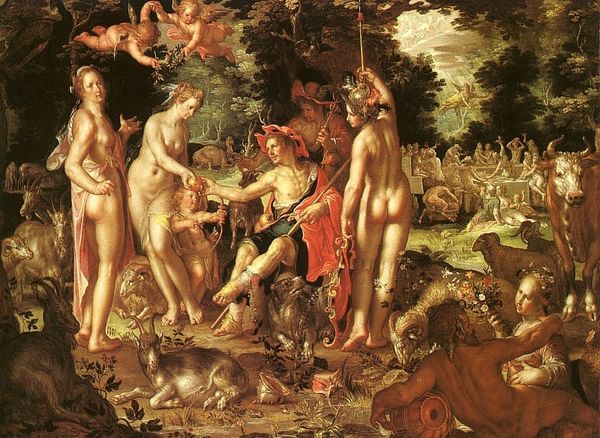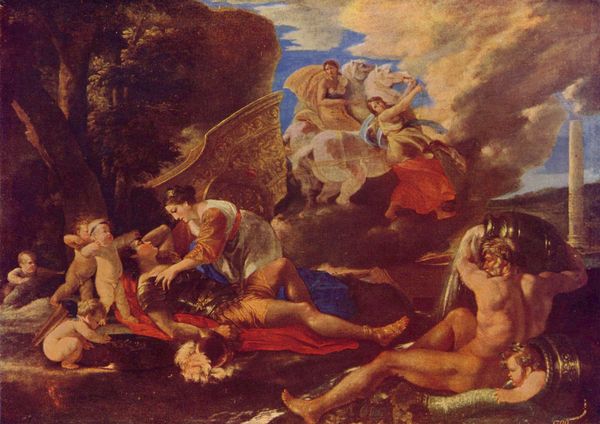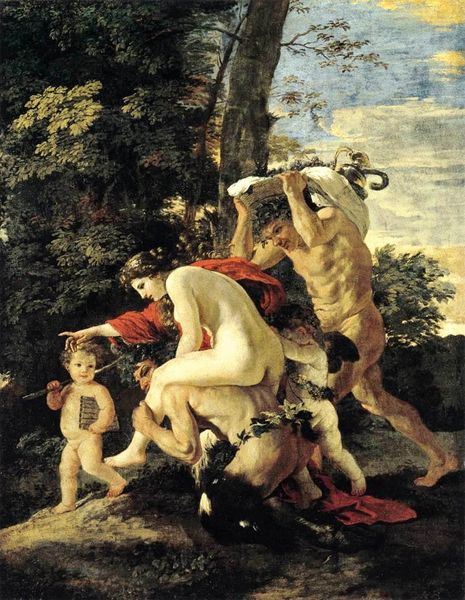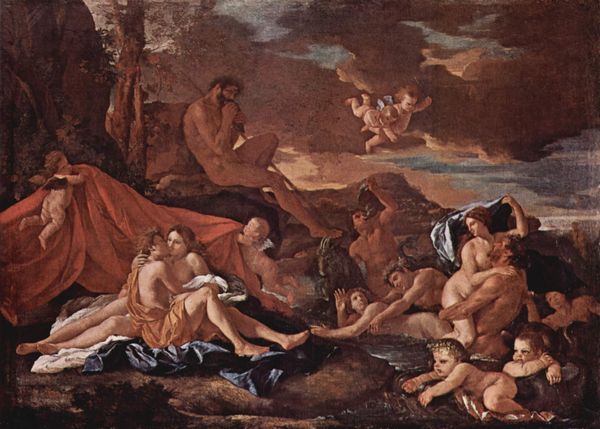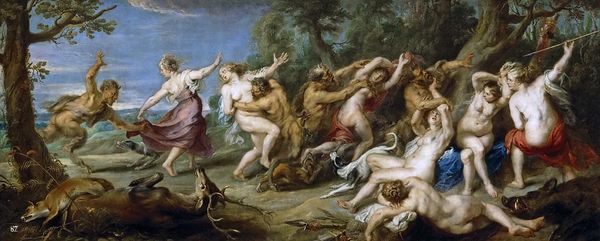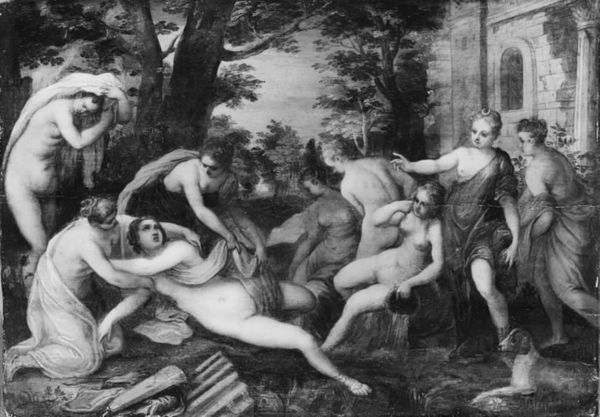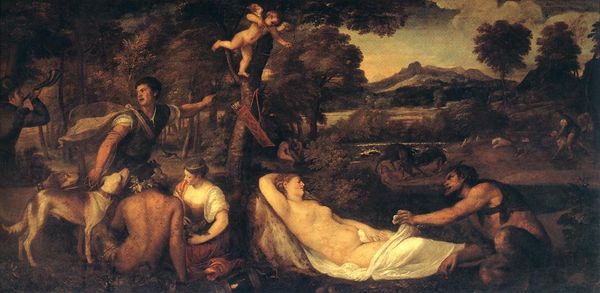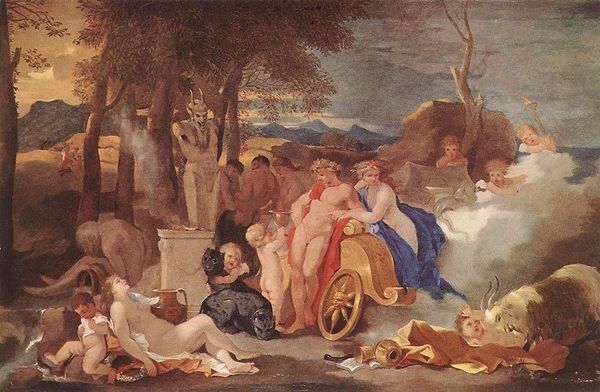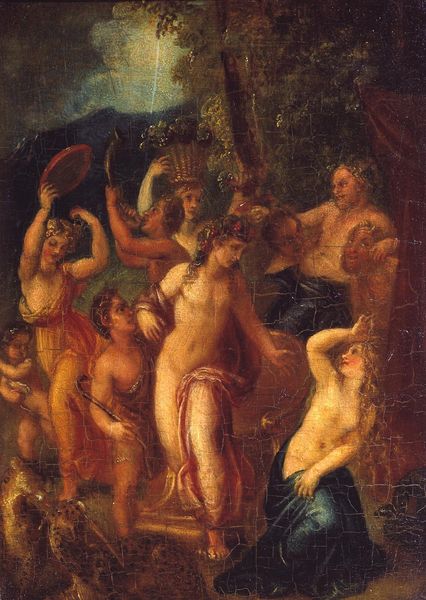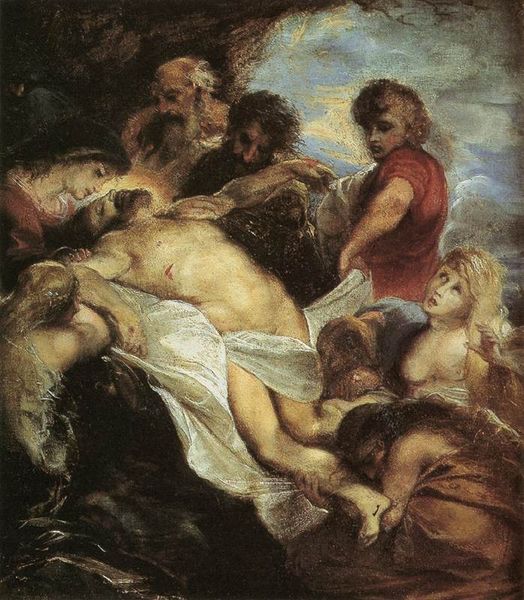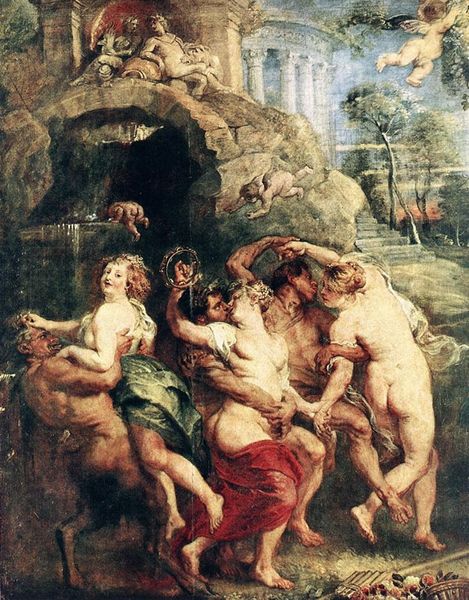
painting, oil-paint
#
baroque
#
painting
#
oil-paint
#
figuration
#
oil painting
#
roman-mythology
#
mythology
#
genre-painting
#
history-painting
Dimensions: 74 x 84 cm
Copyright: Public domain
Curator: This captivating oil painting is titled "Bacchanal of Putti," created in 1626 by Nicolas Poussin, and it resides at the National Gallery of Ancient Art in Rome. Editor: Well, first impression? It feels like controlled chaos. A whirlwind of cherubic figures intertwined with raw, almost unsettling energy. The materiality suggests an intense study of flesh tones, attempting to capture vitality through pigment. Curator: Poussin was deeply engaged with the classical world, evident in his adoption of mythology and the classical technique apparent in "Bacchanal of Putti." The putti, or cherubs, engage in the revelry associated with Bacchus, the Roman god of wine, fertility, and theatre. Editor: That’s fascinating in light of societal restrictions back then. I wonder how Poussin conceived and assembled this work within the framework of prevailing social expectations about class and what materials were being used? Think about the canvas and the process of production, stretching, priming, the layers of pigments that constitute it. These choices weren't simply artistic. Curator: Agreed. It certainly prompts reflections on gender and social class. The sensuality is quite prominent, but it’s cloaked under a veneer of classical allegory. Editor: The very accessibility of mythological imagery was, in fact, socially and politically motivated. For a 17th-century audience, seeing a "Bacchanal" would conjure associations of the theater, performance, freedom... Were there specific performances or texts Poussin had in mind? And where exactly did Poussin acquire his pigment from, what kind of labor relation made it possible, who was producing the materials and how? Curator: That kind of historical context adds so many fascinating layers to our appreciation of the painting, and especially the labour relationships that would've helped it materialize. It allows one to reflect on themes like power, social class and maybe on identity, too, at the time. Editor: And that makes this painting relevant to us, centuries later. Seeing this, understanding its roots and its relationship to art making, it's a great source of information for current activism. Curator: A truly wonderful insight! Thank you, it allowed me to think about this beautiful piece with different eyes.
Comments
No comments
Be the first to comment and join the conversation on the ultimate creative platform.
